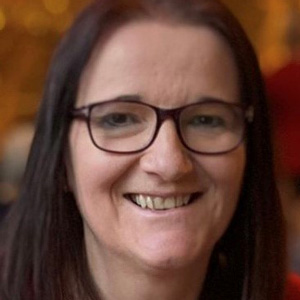Helping vulnerable groups in healthcare: what the research tells us
Author: Deborah Edwards
For more than half a century, researchers have studied vulnerable groups in healthcare, but there's still a lot that we don’t know regarding the connection between long-term illnesses and healthcare inequalities.
Vulnerability
Vulnerability can be considered in different ways – either based on certain traits or characteristics that make some individuals more vulnerable to health issues than others or on people’s experiences when they navigate the healthcare system due to the inherent nature of their conditions. It's important to understand the reasons why some groups face more healthcare inequalities than others.
How the problem was investigated
By using information from evidence syntheses, which combine and summarise all the available research on a particular topic, we get a clear picture of the current research on a topic. I wanted to understand what factors keep leading to health inequalities among vulnerable populations and how this can be improved. The results from a number of evidence syntheses were brought together and framed in an innovative way using the Vulnerable Populations Conceptual Model developed by Flaskerud and Winslow in 1998. The Vulnerable Populations Conceptual Model explains how things, such as having enough resources, your risk compared with others and your health status, are all connected.
Which vulnerable groups were explored
Using this approach, the findings from five separate evidence syntheses explored the inequalities that people encounter when trying to access hospital services, whether that is when getting in and out of the hospital or receiving care while they’re there. The research also considered how social or structural disadvantages can make these differences even worse. Five different vulnerable groups were considered:
1. adults with physical disabilities accessing cancer services
2. adults with severe mental illness at the end of their lives
3. inpatient care for young people with complex mental health needs
4. older adults in the hospital being supported to eat meals
5. people living with dementia receiving care for continence in the hospital.
What was discovered
This work sought to delve deeper into understanding why patients who are already vulnerable because of their medical conditions can sometimes experience greater vulnerability as they go through the healthcare system. This includes looking at how their surroundings and the healthcare resources available can affect their experience. One common theme was that these disadvantaged groups did not have good interactions, and therefore relationships, with healthcare staff. A common theme was not having enough resources, which was interpreted as having good interactions and relationships with healthcare professionals. This is of concern as the Vulnerable Populations Conceptual Model proposes that those who lack available resources are at increased risk of negative health outcomes (delays in diagnosis, higher rates of morbidity and premature mortality).
Implications
Using the Vulnerable Populations Conceptual Model in this way can be valuable for guiding healthcare practices and policies. It helps us understand what opportunities and resources are necessary to safeguard the health of vulnerable groups. Understanding the challenges tied to resources, risk and health helps us see the unique difficulties in assisting vulnerable groups. Healthcare professionals must also recognise these challenges and strive to improve their interactions to ensure that everyone receives fair and quality care.
Co-publication declaration. This blog is based on my PhD by published work, which is available on the institutional repository of Cardiff University.
Disclaimer
The views expressed in this World EBHC Day Blog, as well as any errors or omissions, are the sole responsibility of the author and do not represent the views of the World EBHC Day Steering Committee, Official Partners or Sponsors; nor does it imply endorsement by the aforementioned parties.
